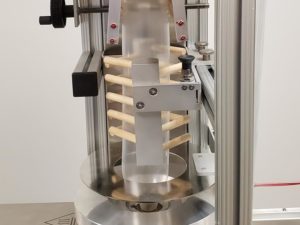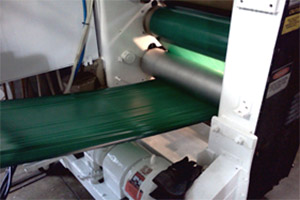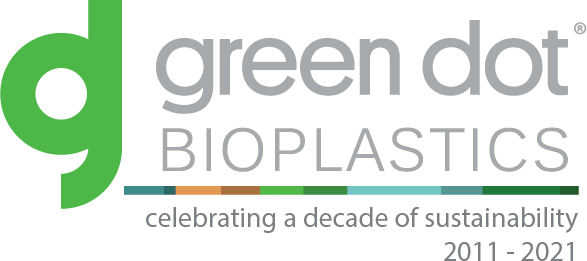Compostable film is one solution to single-use packaging pollution
Plastic waste is a crisis for our planet.
According to the United Nations, humans produce 400 million tons of plastic each year worldwide, half of which are single-use. Plastics are becoming part of the Earth’s fossil record and a marker of the Anthropocene, our current geological era.
Recycling was supposed to offset the growing use of plastics, yet even after 40 years of campaigns, we only recycle about 10% of the plastic we consume.
Clearly, we need a better solution.
Green Dot Bioplastics’, an expansion of the Terratek® BD product line, provide many of the same characteristics as traditional plastic, except they deliver faster rates of biodegradability for home composting and industrial composting. Dave Szink, Chief Commercial Officer, has more than 25 years of experience in films and flexible packaging. In a conversation about Green Dot’s compostable film resins, he explained how this breakthrough in material technology will change the future of packaging.
“As we talk with brand owners, many of them have initiatives that they have put out for public consumption to reduce petroleum-based packaging by a certain date. We are not just trying to help them check off those boxes, so to speak, but to really address some of the concerns we’re hearing from the public at large,” Dave said. “Green Dot’s compostable film grades are meant to be an alternative resin to the traditional plastic resins being utilized in flexible packaging now. They have many of the same applications but with substantial benefits in terms of sustainability at both the beginning and end of the life cycle.”
Single-Use Packaging and Sustainability
Single-use packaging and disposable items are all around us, especially related to our food consumption. From potato chip bags to nutritional bars to the utensils that come with our takeout order, most of us encounter single-use plastic daily. And the majority of that plastic is not recyclable due to food residue contamination.
This type of plastic waste surged during the pandemic as more people ordered takeout, bringing the issue into sharper focus. A variety of solutions are in various stages of testing and implementation, from reusable bowls and refillable cups to increased efforts to improve recycling and composting infrastructures.
“The Holy Grail is home compostable or industrial compostable within a closed loop at a stadium or sports event,” Dave said. “Think about how much plastic waste we could eliminate if, after a college football game the waste was put through the composting process.”
Source Reduction
Experts agree that the number one strategy to combat single-use packaging waste is to reduce the amount of plastic used in packaging. In other words, begin at the source.
“Having been in flexible packaging for the past 25 years, a lot of packages are engineering marvels. But I think, in a lot of instances, they’re over-engineered as well, so one of the plastic pollution targets, in addition to origin of life and end of life sustainability, is source reduction,” Dave said.
Bans and taxes on single-use plastics exist in more than 120 countries, but thus far the impact on overall pollution is minimal. Most regulations are limited to items like plastic bags, which make up a tiny share of plastic waste, and are more effective at reducing littering than curbing plastics consumption.
Green Dot’s Terratek® BD compostable film resins are designed to require less raw material while maintaining durability, flexibility and other performance attributes to meet the application requirements.
“Our resins allow you to down gauge the film in some applications to reduce source materials,” Dave said. “For example, you can go from a three mil polyethylene sealant web to maybe a two mil or even a one-and-a-half mil without sacrificing any of the performance and still meeting the application or fitness for use requirements.”
Compostable Film Resins, Reliable Performance
Brand owners, OEMs and converters are comfortable with the products they already use and this is something Green Dot has considered.
“Some of the formulations and blends we put together are designed and formulated to perform in a similar manner to the incumbent films that are currently in the marketplace,” Dave said. “They exhibit a lot of the same characteristics – the low seal initiation temperature, the hot tack initiation temperature and the dart and puncture.”
Furthermore, “It’s designed to be used just as you would use a polypropylene or polyethylene in a standard flexible packaging application,” he said.
The branding possibilities are endless because the film can be surface printed, reverse printed, laminated or used as single layer in both vertical, as well as horizontal; form, fill, and seal applications. In some cases, Terratek® BD compostable films outperform other resins. For example, Green Dot’s product offers better clarity and optics than some polybutylene succinate (PBS) products and more flexibility and durability than polylactic acid (PLA).
“If you look at PLA, while it does exhibit good clarity and gloss, it’s a very stiff, very rigid film. Our films perform more like linear low-density polyethylene in terms of drop, dart and puncture. They are a more robust substrate than a PLA,” Dave said.
Sustainable Films on Existing Machinery
Some reluctance in the past has come from the cost associated with having to install new equipment to accommodate bioplastics. With Green Dot’s products that isn’t the case.
“You can use the same equipment you’ve been using,” Dave said. “Switching to our compostable film resins won’t require any capital expense in terms of new equipment. It’s just a matter of setting up the machine to run bioplastics which could be termed as minor modifications and adjustments.”
Those adjustments include lowering the temperatures and adjusting line speeds. Green Dot’s bioplastics require lower temperatures to process than standard film resins. Dave said that while polypropylene and polyethylene run from 180 Fahrenheit to 220 Fahrenheit, the seal initiation temperature for bioplastics is between 150-160 Fahrenheit.
“If you’re running your lines at lower temperatures, typically you should see a decrease in rework and an increase in line speeds and efficiencies,” he said. “That means less energy output and less output of overall energy in terms of heat, which translates to cost savings as well as reduced environmental impact.”
Solving the single-use film and packaging plastic waste problem is layered. It requires rethinking the entire lifecycle of these items, embracing sustainable materials, vastly improving recycling and composting infrastructure, as well as educating brand owners, OEMs, and consumers about sustainable practices.
“In terms of processing these materials, from beginning to end, the specific aim in how we formulate and manufacture these products is to produce them in such a way that brand owners will see a dramatic, positive difference from what they’re using now,” he said.
If you have decided compostable packaging is right for your product, we’re interested in discussing it with you. Click here to contact our sales team to schedule a material selection consultation and we’ll determine which Terratek® BD resin is correct for your application.
Visit our Materials Landing Page to review Product options and data sheets.




